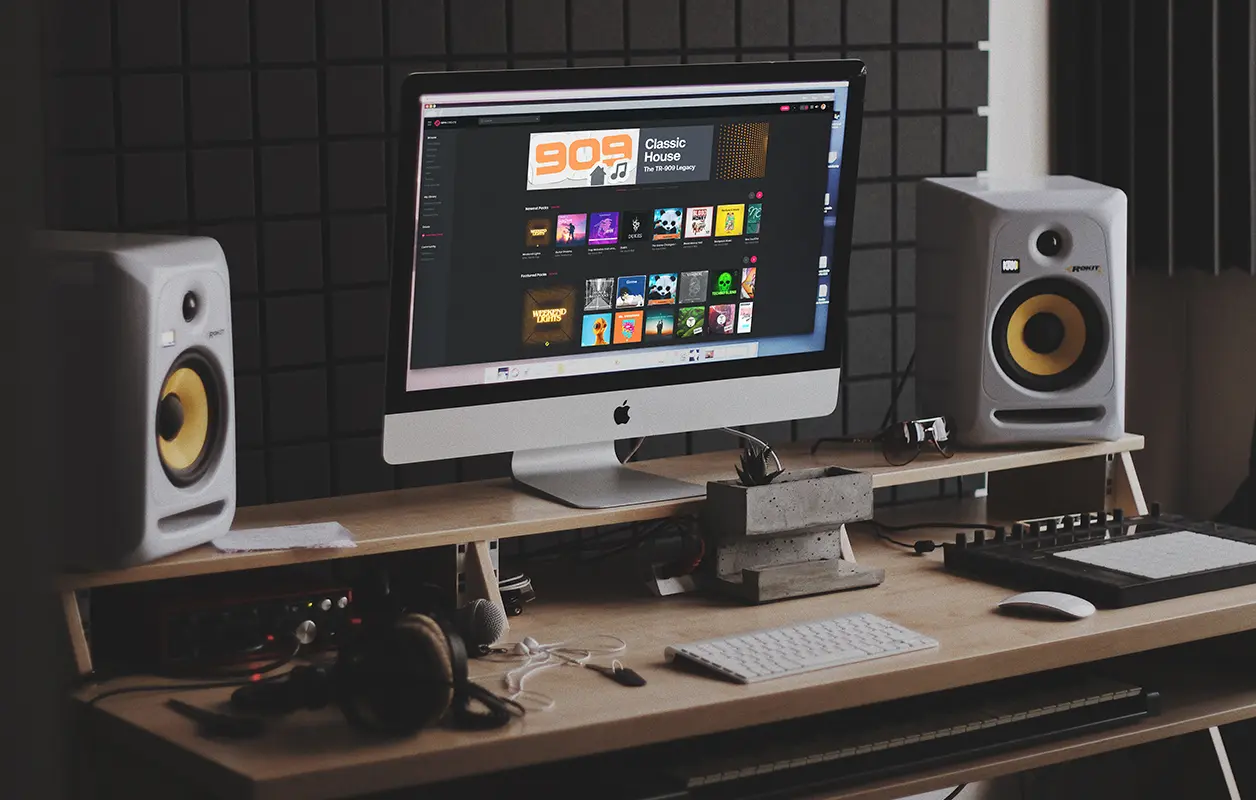The music production industry offers unprecedented opportunities in 2025. With technology democratizing access to professional-grade tools and multiple revenue streams becoming viable, aspiring producers can build sustainable careers without expensive studio facilities or traditional industry gatekeeping. Understanding the comprehensive pathway to success requires examining essential skills, optimal tools, educational resources, and realistic career strategies.
Understanding the Role of a Modern Music Producer
A music producer oversees the entire production process of a song or album, working closely with artists to guide creative direction and ensure the final product achieves the desired sonic vision. Beyond technical skills, modern producers manage recording sessions, suggest arrangements, coordinate mixing and mastering, and often contribute creatively to composition and songwriting. The role has evolved substantially—today’s successful producers are multi-skilled professionals who handle not only music creation but also business development, marketing, and financial management.
Essential Skills for Music Producers
Building a successful production career requires developing interconnected technical, creative, and business skills:
Technical Proficiency
Master digital audio workstations (DAWs) like Ableton Live, Logic Pro, FL Studio, or Pro Tools. Understanding audio engineering principles including equalization, compression, reverb, and other effects is fundamental to creating polished recordings. Proficiency with MIDI programming, synthesizers, and virtual instruments enables you to compose and arrange music electronically.
Musical Foundation
Learning music theory and composition provides the theoretical framework for making informed decisions about harmony, melody, and rhythm. Developing basic proficiency on an instrument—particularly keyboard or guitar—facilitates understanding musical structure and songwriting. While you don’t need virtuoso-level instrumental skills, musical literacy distinguishes exceptional producers from technically competent ones.
Sound Design and Creative Skills
Creating original sounds through synthesizers, samplers, and effects plugins gives your productions unique character. The ability to sample and reimagine existing sounds innovatively allows creative repurposing of audio material. Critically listening to diverse music across genres and analyzing production techniques builds the creative reference library that informs your own work.
Communication and Collaboration
Strong interpersonal skills enable effective collaboration with artists, musicians, songwriters, and other professionals. Clear communication about creative vision, technical requirements, and project expectations prevents misunderstandings and enhances creative output. Understanding how to give and receive constructive criticism creates positive working relationships.
Business Acumen
Networking skills connect you with potential clients, collaborators, and mentors. Marketing abilities help you promote your work across social media and professional platforms. Understanding pricing strategies, contract negotiation, and copyright/royalty management ensures fair compensation for your work.
Setting Up Your Production Environment
Home Studio Essentials
Begin with computer hardware capable of handling demanding DAW processing. A reliable machine from the past three to five years with 8GB RAM minimum (16GB recommended) and solid-state drive storage provides a solid foundation. Both Mac and PC platforms offer excellent production capabilities—modern Mac M-series chips and Intel/AMD Ryzen processors handle professional production effortlessly.
Your digital audio workstation selection depends on your musical preferences and workflow style. FL Studio excels for beatmakers and electronic producers, Ableton Live dominates electronic music production, Logic Pro offers Mac-exclusive professional tools, Pro Tools remains the industry standard for recording studios, and Studio One provides streamlined mixing workflows. Free alternatives like GarageBand, Audacity, Cakewalk by BandLab, and Tracktion Waveform Free allow experimentation before financial investment.
Audio interface quality directly impacts recording fidelity. The Focusrite Scarlett 2i2 or 4i4 ($150) remain industry-standard beginner interfaces, while the PreSonus AudioBox USB 96 ($100) and Studio 24c ($150) offer excellent budget options. These interfaces include 48V phantom power for condenser microphones and low-latency monitoring.
Microphone selection depends on your recording focus. The Audio-Technica AT2020 ($99) serves as a versatile condenser option for vocals and acoustic instruments, while the Shure SM57 ($99) handles loud sources like amplifiers and drums. USB alternatives like the Rode NT-USB Mini, Blue Yeti, and Elgato Wave:3 provide plug-and-play convenience for beginners.
Studio monitoring equipment enables accurate mixing decisions. Nearfield studio monitors like the Yamaha HS5 ($200-250) or PreSonus Eris E5 provide frequency representation without overwhelming small rooms. Close-back headphones such as the Audio-Technica M50x or Beyerdynamic DT770 provide isolation and reveal mixing details that monitors may miss.
Educational Pathways to Music Production Mastery
Formal Education Options
Audio engineering degree programs provide structured education in sound recording, mixing, mastering, and DAW operation. Programs like Berklee College of Music offer comprehensive curricula covering technical skills, music theory, composition, and music business. Institutions including Musicians Institute and Point Blank Music School offer specialized music production programs combining theoretical knowledge with practical experience.
Online Courses and Specializations
Coursera’s Music Production Specialization (offered by Berklee) provides a four-course series covering pre-production, recording, mixing techniques, and capstone projects for approximately $50 monthly or $399 annually. The program is highly rated (4.8/5 stars) with nearly 2,000 reviews and offers flexible self-paced learning.
Upskillist offers the Music Generation Course combining traditional music theory with modern AI tools at $39.99 monthly with a free trial. The platform includes 20 hours of expert-led training and CPD accreditation from the CPD Certification Service.
Studio.com features masterclasses by hit-making producers including Charlie Puth’s “Pop Music Production,” Kygo’s “Electronic Music Production,” and Andrew Huang’s “Complete Music Production” course. These one-time purchases ($449) provide permanent access to high-production-value video content with downloadable project files.
Point Blank Music School offers flexible options including full degree programs, weekend courses, summer schools, and single skill-based modules starting from $887. They typically include free software copies like NI Komplete and Ableton Live.
Pyramind Music Production School (San Francisco + Online) offers specialized programs including “The Complete Producer” course and focused “Electronic Music Producer” training starting at $495 per module.
Mentor-Apprentice Model
The Recording Connection implements a hands-on mentorship approach pairing students with working audio professionals in active studios. Graduates report accelerated career entry and industry connections—notably, graduate Niko Marzouca progressed from student to working with Wyclef Jean and Alicia Keys. This model emphasizes real-world experience over classroom theory.
Building Your First Portfolio and Landing Clients
Creating a Compelling Portfolio
Your portfolio represents your professional calling card, demonstrating skill, versatility, and work quality to potential clients. Include 3-5 signature tracks showcasing your unique sound while demonstrating range across genres or styles. Behind-the-scenes workflow documentation, artist testimonials, and project credits enhance portfolio professionalism.
Organize portfolio content strategically by genre, mood, or technique rather than chronologically, making it easier for clients to find suitable work. Regularly refresh your portfolio by removing older material and adding recent projects that reflect your current artistic direction.
Hosting Your Portfolio
A personal website serves as your primary portfolio platform, offering complete creative control over presentation. Platforms like Squarespace, Wix, and WordPress enable professional site creation without web design experience. Personal websites generate quality leads from clients who invested effort researching you specifically.
Freelance platforms like SoundBetter and Airgigs connect you with artists seeking production, mixing, mastering, and songwriting services. These platforms, though commission-based, provide access to audiences actively searching for producers.
Securing Your First Clients
Many successful producers gain initial experience through discounted or free work strategically leveraged for credibility. The proven strategy involves offering free custom beats to emerging artists in exchange for testimonials. Once you secure one testimonial, charge the next client $100, then escalate rates with each new project as your experience grows.
Targeted outreach through social media involves messaging artists whose work resonates with your style, expressing genuine appreciation for their music, and offering specific value. Phone consultations allow understanding their precise needs and building rapport before investing production time.
Identifying niche audiences and targeting them specifically increases conversion rates. Building strong relationships leads to referrals and repeat business, eventually creating a self-sustaining client pipeline.
Revenue Models for Music Producers
The global music industry generated $28.6 billion in 2024, yet distribution remains concentrated with the top 1% of artists earning 35% of independent revenue. Successful producers therefore diversify income streams rather than relying solely on studio fees.
Production Services and Studio Work
Direct production services form the foundation for most producer careers. Per-track pricing typically ranges from $200-$500 for beginners, $500-$2,000 for intermediate producers, and $2,000+ for experienced professionals. Hourly rates vary similarly: $20-$50 for beginners, $50-$150 for mid-career professionals, and $150-$300+ for established producers. Project complexity significantly affects rates, with simple demos charging less than full album production.
According to 2025 salary data, the average music producer salary reaches $61,250 annually, with entry-level producers averaging $50,190, mid-career averaging $58,049, and senior producers exceeding $180,000 annually.
Royalties and Publishing Rights
Smart producers negotiate publishing splits and producer royalties, earning money each time a track streams, plays on radio, or appears in media. Performance Rights Organizations (PROs) track and collect these royalties, providing passive income for years following a track’s release. Even moderate commercial success generates thousands in long-term royalty income.
Music Licensing and Sync Opportunities
Sync licensing—placing music in films, TV shows, commercials, and online content—has become one of the most lucrative opportunities for producers. Global sync revenues reached $600-$650 million in 2025, with significant growth expected from streaming platforms, gaming, and short-form content. Platforms like AudioJungle, Epidemic Sound, and Artlist enable global music licensing with successful placements earning $50 to $100,000+ depending on project scope.
Creating mood-specific instrumental tracks designed explicitly for sync opportunities generates steady supplemental income. Genres experiencing increased demand include hip-hop and R&B, indie and alternative rock, electronic dance music, Latin music, and retro/throwback styles.
Beat and Track Selling
BeatStars dominates the beat marketplace with over 3 million users and millions of dollars in annual beat sales. The platform’s commission structure ranges from 30% on free plans, 3% on unlimited plans ($9.99 monthly), 0% on pro plans ($19.99 monthly), and premium marketplace features at $39.99 monthly. Notable success includes producer YoungKio selling the “Old Town Road” beat for $30, which became a global phenomenon.
Airbit and Traktrain offer alternative marketplaces. Traktrain charges 20% commission and appeals to underground and experimental producers seeking higher-quality, curated communities rather than mainstream beat volume. SoundOn merges distribution with TikTok’s viral potential, enabling producers to push beats to streaming services while tapping trending sounds.
Networking and Industry Integration
Building Industry Relationships
Begin networking by leveraging existing connections for introductions and referrals to expand your professional circle. Immerse yourself in local music scenes by attending live performances and connecting with musicians, promoters, and other industry professionals.
Social media platforms including Instagram, LinkedIn, and Twitter enable long-distance relationship building through following industry leaders, engaging with their content, and participating in music-related discussions. Discord servers, Reddit threads, and Facebook music groups provide community spaces for connecting with like-minded professionals.
Attending premier industry events including SXSW (Austin), NAMM, Midem (Cannes), IMS (Ibiza), and music festivals like The Great Escape (Brighton) and Sonar provides in-person networking with musicians, promoters, producers, and industry professionals.
Effective Follow-Up and Relationship Maintenance
Personalized follow-up messages after meetings demonstrate genuine interest in professional relationships. Offering value to your network—whether through sharing useful information, providing support, or making beneficial introductions—builds goodwill and strengthens relationships.
Collaborative projects strengthen industry relationships through co-writing songs, producing tracks together, or other creative partnerships that build trust and open doors to future opportunities.
Staying Informed and Engaged
Following industry publications like Billboard and Pitchfork keeps you informed about trends, industry news, and emerging opportunities. Music knowledge demonstrates serious career commitment and provides conversation starting points with industry professionals.
Consistency, Evolution, and Long-Term Success
Finding the balance between consistency and innovation prevents stagnation while maintaining recognizable artistic identity. The “80/20 rule” suggests maintaining 80% of your signature sound while experimenting with 20% new techniques and styles. Slow, gradual evolution integrates new approaches without alienating existing audiences.
Producer Max Martin exemplifies this approach, maintaining core sonic identity while consistently introducing fresh elements that keep his productions contemporary.
Becoming a music producer in 2025 requires developing technical proficiency, musical knowledge, creative capabilities, and business skills. Success combines affordable home studio setup ($500-$2,000), targeted education through online courses or mentorship programs, strategic portfolio development, and multiple income stream diversification spanning production services, royalties, sync licensing, and beat sales. The pathway emphasizes gradual client acquisition through relationship building, networking, and strategic rate escalation as experience accumulates. With disciplined skill development, authentic industry networking, and adaptability to evolving market opportunities, aspiring producers can build sustainable, profitable careers in today’s accessible music production landscape.




